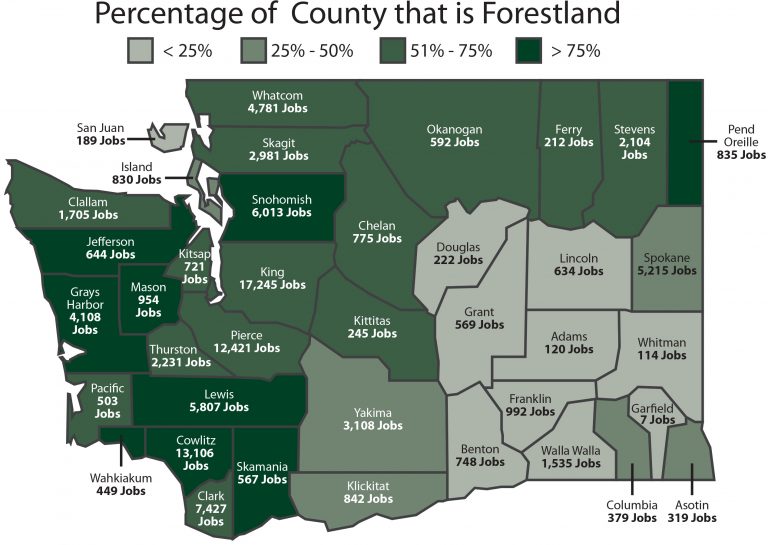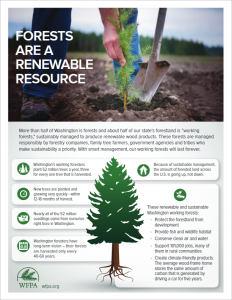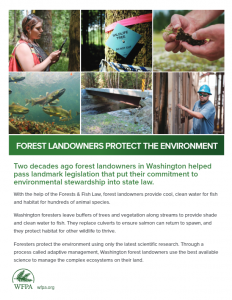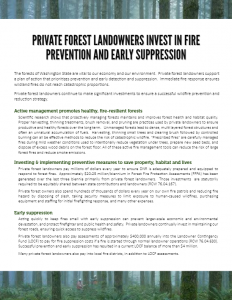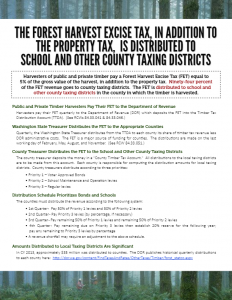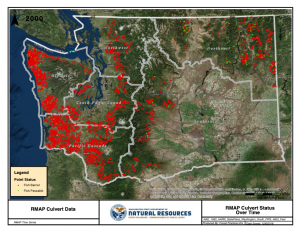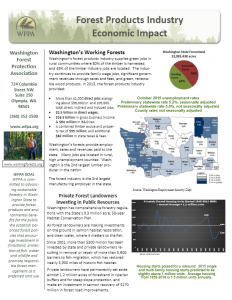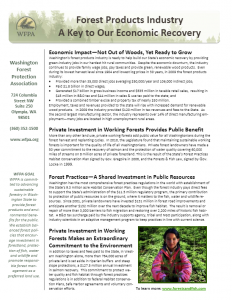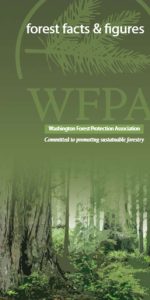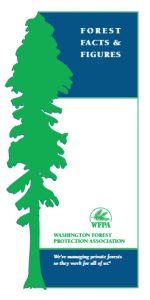WASHINGTON FOREST PROTECTION ASSOCIATION
Forest Facts
FORESTS FACTS AND FIGURES
Click here to see the economic impact of working forests and wood manufacturing in each county.
WORKING FORESTS FACT SHEETS
FOREST LANDOWNER PROTECT THE ENVIRONMENT
From 2001 through 2018, forest landowners have removed more than 8,100 barriers to fish passage. Approximately 83% of those identified have been eliminated, opening up nearly 6,200 miles of historic fish habitat. The goal is to eliminate 100% of the barriers by 2021.
FOREST LANDOWNER RMAP ACCOMPLISHMENTS
From 2001 through 2018, forest landowners have removed more than 8,100 barriers to fish passage. Approximately 83% of those identified have been eliminated, opening up nearly 6,200 miles of historic fish habitat. The goal is to eliminate 100% of the barriers by 2021.
HISTORICAL FOREST FACTS & FIGURES
RESEARCH SUMMARIES
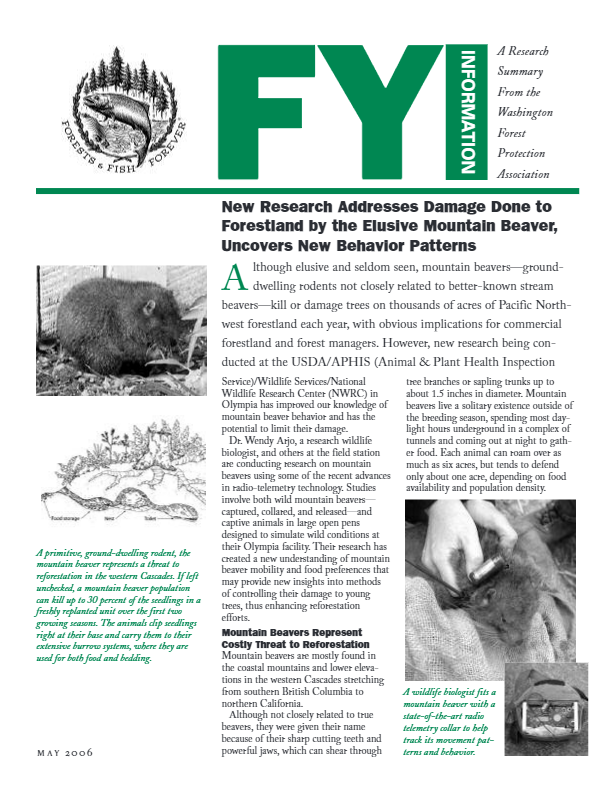
New Research At The USDA-APHIS Olympia Field Station About Mountain Beaver Behavior Changes Old Thinking
The mountain beaver represents costly threats to reforestation. New research has improved our knowledge about mountain beaver behavior and has the potential to limit their damage.
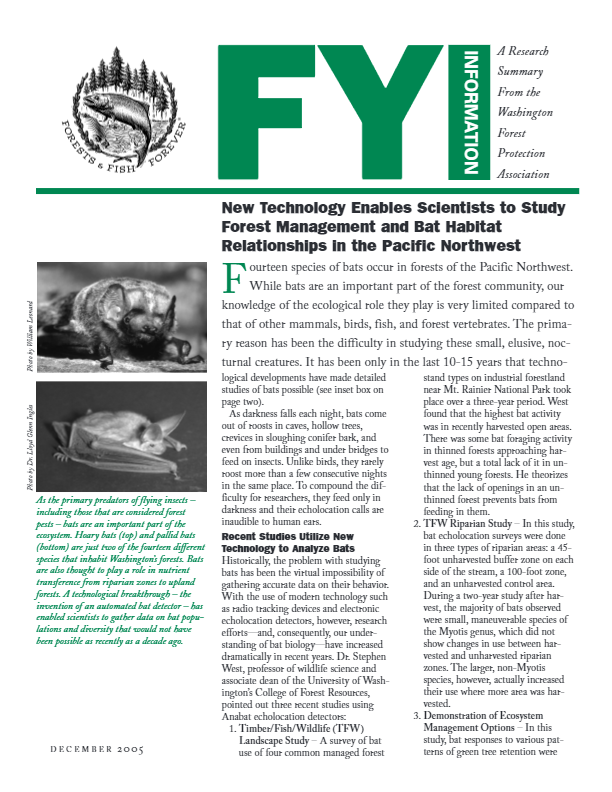
Forest Management And Bat Habitat Relationships Studied
Fourteen species of bats occur in forests of the Pacific Northwest. New technology has made detailed studies of bats possible.
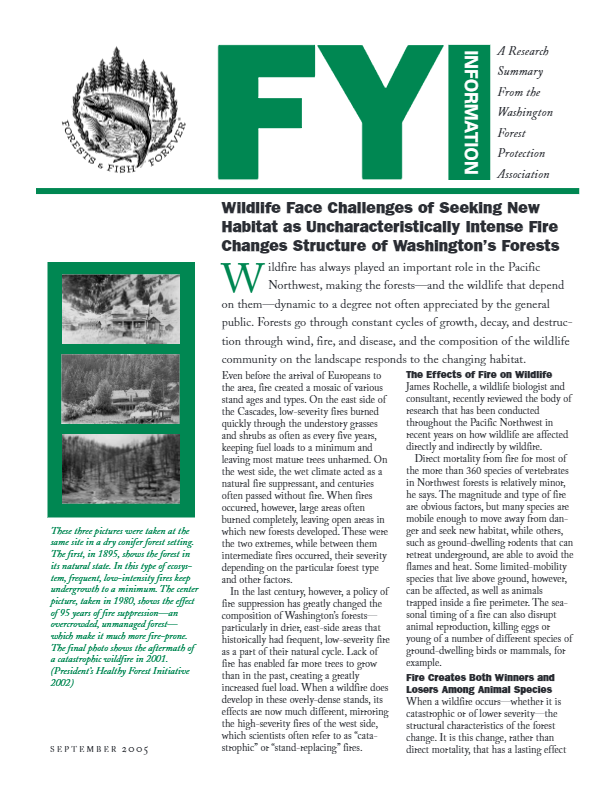
Wildfire
When a wildfire occurs, whether it is catastrophic or of lower severity, the structural characteristics of the forest change.
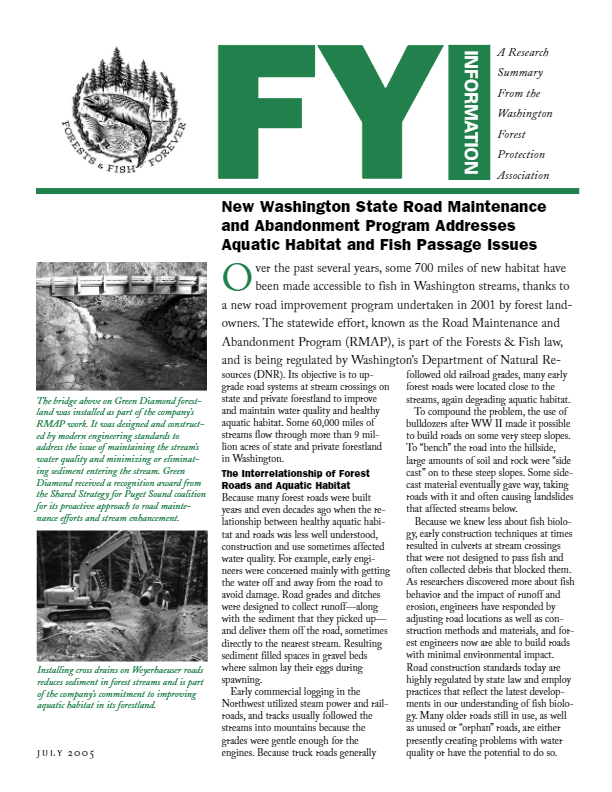
Road Maintenance & Abandonment Plans
New Washington State Road Maintenance and Abandonment Plan address aquatic habitat and fish passage issues.
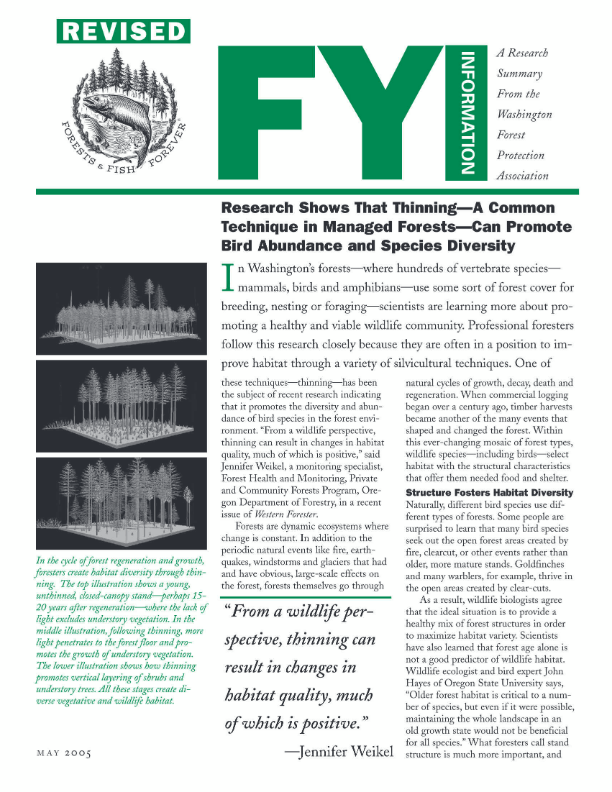
Thinning — A Common Technique in Managed Forests
Research shows that thinning — a common technique in managed forests — can promote bird abundance and species diversity.
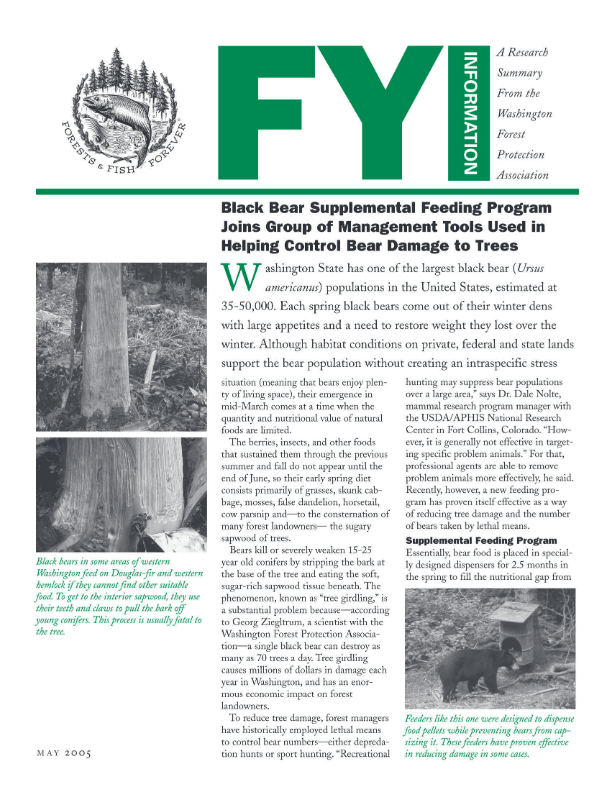
Black Bear Supplemental Feeding Program
The supplemental feeding program joins group of management tools used in helping control bear damage to trees.
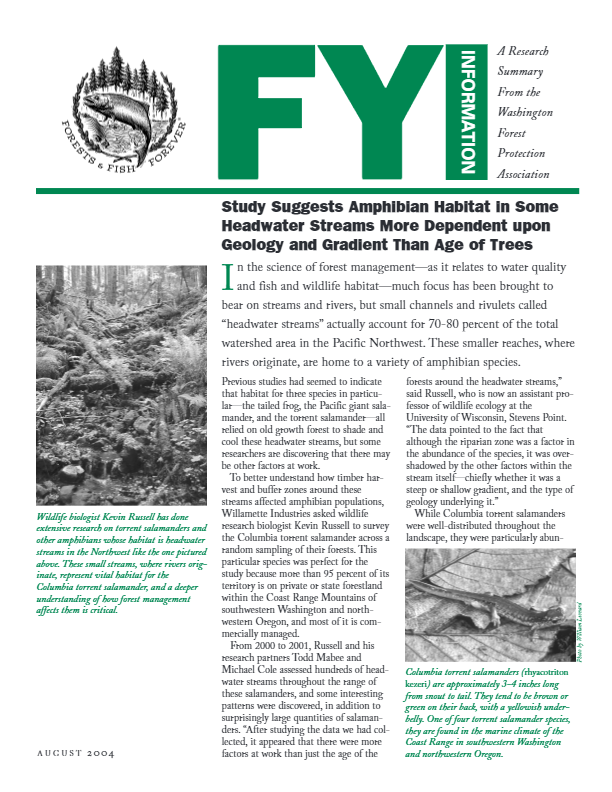
Amphibian Habitat Dependent on Geology and Gradient
Study suggests amphibian habitat in some headwater streams more dependent upon geology and gradient than age of trees.
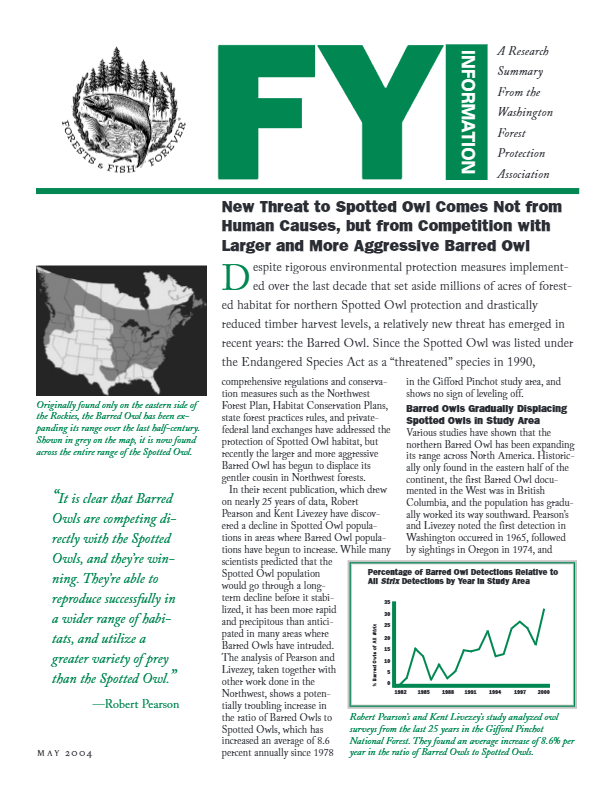
New Threat to Spotted Owl
New threat to Spotted Owl comes from competition with larger and more aggressive Barred Owl.
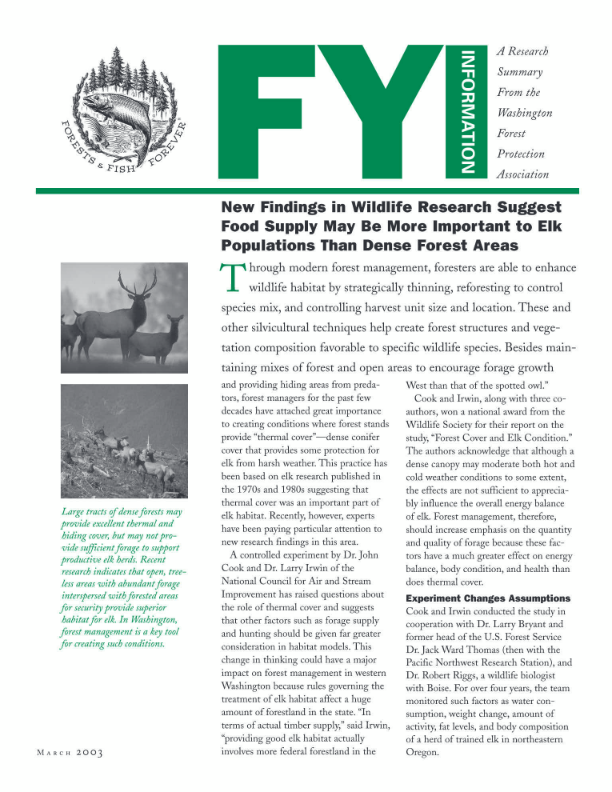
New Findings in Wildlife Research Suggest Food Supply More Important to Elk than Dense Forests
Through modern forest management, foresters are able to enhance wildlife habitat.
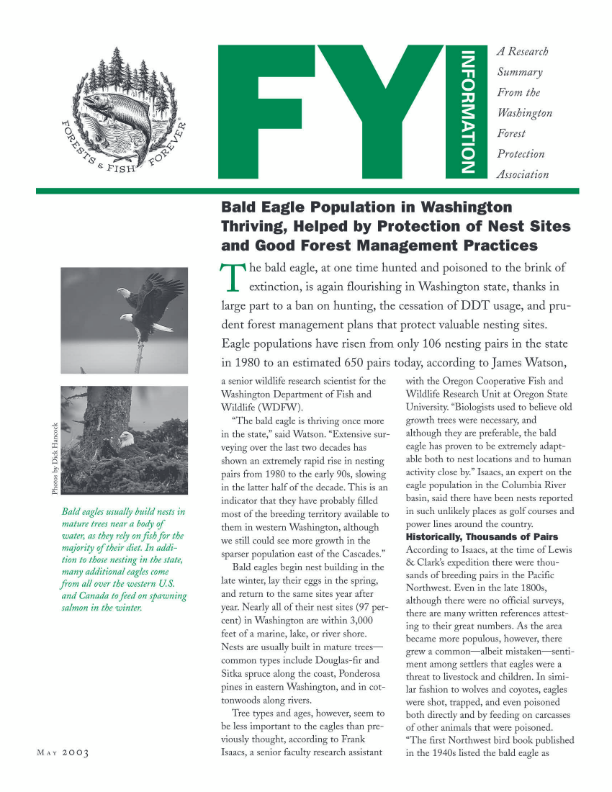
The Bald Eagle population in Washington is thriving, helped by protection of nest sites and good forest management practices.
The bald eagle is thriving again in Washington state.
